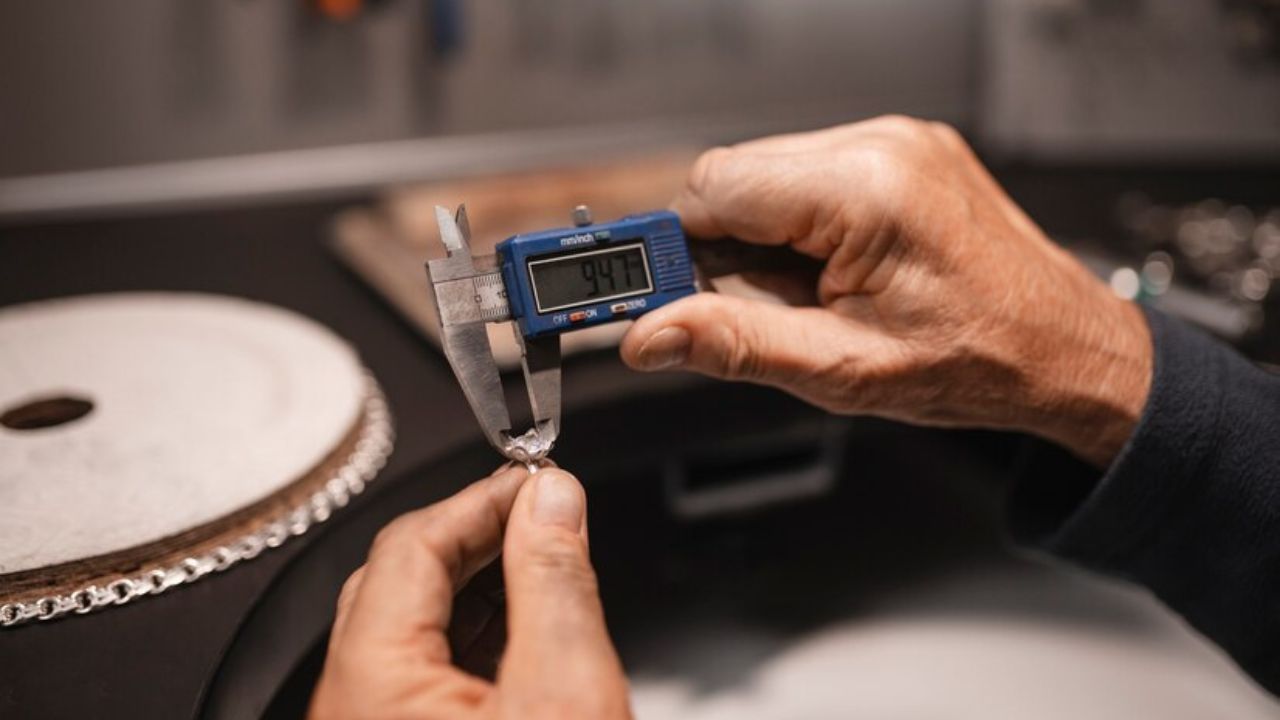BLOG
Vacumetros: Everything You Need To Know

Navigating the world of automotive diagnostics can sometimes feel like venturing into uncharted territory. For those who take pride in understanding the intricacies of their vehicles, vacumetros are an essential tool. Whether you’re a seasoned mechanic or an enthusiastic car owner, this blog post will help you understand everything you need to know about vacumetros and how they can revolutionize your car maintenance routine.
What Are Vacumetros?
At its core, a vacuometer (vacumetro in Spanish) is a device used to measure the vacuum pressure within an engine. This pressure is crucial for various engine functions, including fuel delivery, ignition timing, and emissions control. By monitoring vacuum pressure, you can diagnose potential issues and ensure your engine runs smoothly.
Vacumetros are invaluable in diagnosing common engine problems such as leaks, poor fuel efficiency, and rough idling. The device provides a visual representation of the engine’s performance, allowing for precise adjustments and maintenance.
Understanding how a vacuometer works can demystify the process of engine diagnostics. By measuring the difference between the atmospheric pressure and the vacuum created by the engine, the device provides real-time feedback on the engine’s health.
The Importance of Vacuum Pressure in Engines
Vacuum pressure plays a pivotal role in the overall performance of an engine. It’s involved in various critical functions that ensure the engine operates efficiently and effectively.
One of the primary roles of vacuum pressure is in the fuel delivery system. A consistent vacuum helps draw fuel into the engine, ensuring optimal combustion and power output. Without adequate vacuum pressure, fuel delivery can become erratic, leading to performance issues.
Another crucial function of vacuum pressure is in the ignition timing. Proper vacuum pressure ensures that the ignition timing is accurate, which is essential for efficient combustion and smooth engine operation. Incorrect ignition timing can lead to knocking, pinging, and reduced engine performance.
Furthermore, vacuum pressure is vital for emissions control. Many modern engines rely on vacuum-operated components to reduce harmful emissions. By maintaining proper vacuum pressure, you can help ensure your vehicle meets environmental standards and operates cleanly.
How to Use a Vacuometer
Using a vacuometer may seem daunting at first, but with a few simple steps, you can quickly become proficient in this essential diagnostic tool. Start by locating the vacuum port on your engine, typically found on the intake manifold or carburetor.
Once you’ve identified the vacuum port, connect the vacuometer using the appropriate fittings. Ensure a secure connection to prevent any leaks that could affect the readings. With the vacuometer connected, start the engine and allow it to idle.
Observe the vacuometer’s readings while the engine is idling. A healthy engine should display a steady vacuum reading within the manufacturer’s specified range. Fluctuations or erratic readings could indicate potential issues such as vacuum leaks, worn-out components, or incorrect engine timing.
Diagnosing Common Engine Problems with a Vacuometer
A vacuometer can help diagnose a wide range of engine problems, making it an invaluable tool for any car enthusiast or mechanic. One common issue that a vacuometer can detect is a vacuum leak. Leaks can occur in various engine components, including hoses, gaskets, and seals. Identifying and repairing these leaks can significantly improve engine performance.
Another problem that a vacuometer can help diagnose is poor fuel efficiency. Inconsistent vacuum pressure can lead to improper fuel delivery, resulting in reduced miles per gallon. By using a vacuometer, you can identify and address issues affecting fuel efficiency, ultimately saving money at the pump.
Rough idling is another common issue that can be diagnosed with a vacuometer. Fluctuating or low vacuum readings at idle can indicate problems with the intake manifold, carburetor, or other engine components. Addressing these issues can lead to a smoother, more stable idle and improved overall engine performance.
Tips for Maintaining Your Vacuometer
To ensure your vacuometer provides accurate readings and remains in good working condition, it’s essential to follow some basic maintenance tips. Regularly inspect the vacuometer for any signs of wear or damage, such as cracks in the housing or damaged fittings.
Keeping the vacuometer clean is also crucial for accurate readings. Dirt and debris can accumulate on the gauge face, obscuring the readings and affecting the device’s accuracy. Use a soft cloth or brush to gently clean the vacuometer, taking care not to damage the delicate components.
Finally, store your vacuometer in a safe, dry place when not in use. Exposure to extreme temperatures, moisture, or direct sunlight can damage the device and affect its accuracy. Proper storage will help ensure your vacuometer remains in excellent condition for years to come.
Choosing the Right Vacuometer for Your Needs
With various vacuometers available on the market, selecting the right one for your needs can be challenging. Consider factors such as accuracy, ease of use, and durability when choosing a vacuometer.
Accuracy is paramount when selecting a vacuometer. Look for a device with a high level of precision to ensure accurate readings and reliable diagnostics. Many modern vacuometers feature digital displays, which can provide more accurate and easily readable results.
Ease of use is another important consideration. Choose a vacuometer with clear instructions and user-friendly features, such as easy-to-read gauges and straightforward connections. This will make it easier to use the device effectively and obtain accurate readings.
Durability is also crucial when selecting a vacuometer. Look for a device made from high-quality materials that can withstand the rigors of regular use. A durable vacuometer will provide reliable service and accurate readings for years, making it a worthwhile investment.
The History of Vacuometers
Understanding the history of vacuometers can provide valuable context for their use and importance in automotive diagnostics. The development of vacuometers dates back to the early days of the internal combustion engine when mechanics needed a reliable way to measure vacuum pressure.
Over the years, vacuometers have evolved from simple mechanical devices to sophisticated electronic instruments. Early vacuometers relied on basic mechanical principles to measure vacuum pressure, while modern devices use advanced sensors and digital displays for increased accuracy and ease of use.
The evolution of vacuometers has paralleled advancements in automotive technology, making them an essential tool for diagnosing and maintaining modern engines. By understanding the history and development of vacuometers, you can better appreciate their importance and utility in automotive diagnostics.
Common Misconceptions About Vacuometers
There are several common misconceptions about vacuometers that can lead to confusion and improper use of the device. One misconception is that vacuometers are only useful for diagnosing vacuum leaks. While vacuometers are excellent for detecting leaks, they can also diagnose various other engine problems, such as poor fuel efficiency, rough idling, and incorrect ignition timing.
Another misconception is that vacuometers are difficult to use. While using a vacuometer may seem intimidating at first, following the proper steps and guidelines can make the process straightforward and accessible for anyone, regardless of their experience level.
A final misconception is that vacuometers are not necessary for modern engines. Even with advancements in automotive technology, vacuometers remain an essential tool for diagnosing and maintaining engine performance. By debunking these misconceptions, you can better understand the value and utility of vacuometers in automotive diagnostics.
Integrating Vacuometers into Your Maintenance Routine
Integrating vacuometers into your regular maintenance routine can help ensure your engine remains in optimal condition. Regularly checking vacuum pressure can help identify potential issues before they become significant problems, saving time and money on repairs.
Start by incorporating vacuometer checks into your routine oil changes. This will allow you to monitor vacuum pressure regularly and identify any changes that could indicate potential issues. By staying proactive, you can address problems early and maintain your engine’s performance.
Additionally, consider using a vacuometer before and after performing any significant engine modifications or repairs. This will help ensure that the work has been completed correctly and that the engine is operating as efficiently as possible.
Advanced Vacuometer Techniques
For those looking to take their vacuometer skills to the next level, several advanced techniques can help you diagnose and maintain your engine with greater precision. One advanced technique is using a vacuometer to perform a “snap throttle” test. This involves quickly opening and closing the throttle while observing the vacuometer’s readings. Rapid fluctuations can indicate issues with the intake manifold or other engine components.
Another advanced technique is using a vacuometer to diagnose problems with the engine’s valve train. By observing the vacuometer’s readings while the engine is running at different speeds, you can identify issues with valve timing or valve sealing, which can affect engine performance.
Finally, consider using a vacuometer in conjunction with other diagnostic tools, such as a compression tester or a leak-down tester. This can provide a more comprehensive understanding of your engine’s health and help you pinpoint potential issues with greater accuracy.
The Future of Vacuometers and Automotive Diagnostics
The future of vacuometers and automotive diagnostics is bright, with ongoing advancements in technology promising even greater accuracy and ease of use. As automotive technology continues to evolve, so too will the tools and techniques used to diagnose and maintain engine performance.
One exciting development is integrating vacuometers with other diagnostic tools and systems. This can provide a more comprehensive view of an engine’s health and streamline the diagnostic process, making it easier for mechanics and car enthusiasts to maintain their vehicles.
Another promising development is the use of AI and machine learning in vacuometer technology. By analyzing vast amounts of data, AI-powered vacuometers can provide more accurate diagnostics and predictive maintenance recommendations, helping ensure engines run smoothly and efficiently.
Conclusion
Vacumetros are an indispensable tool for anyone looking to maintain and optimize their engine’s performance. By understanding the importance of vacuum pressure, learning how to use a vacuometer effectively, and integrating regular vacuum checks into your maintenance routine, you can ensure your engine remains in peak condition.
BLOG
How Office Chairs Influence Workplace Collaboration and Communication

The design of an office environment plays a significant role in shaping the culture and productivity of a workplace. Among the many elements that contribute to a productive workspace, office chairs stand out as one of the most influential factors in fostering collaboration and communication. The comfort, functionality, and ergonomics of office chairs directly impact how employees interact with each other, how meetings are conducted, and the overall atmosphere of the workplace.
Comfort and Communication Flow
One of the primary ways office chairs influence communication is through comfort. When employees are comfortable, they are more likely to engage in open conversations, collaborate freely, and contribute ideas during meetings. Uncomfortable seating can lead to distractions, with employees shifting positions or feeling restless, which ultimately hampers their ability to focus and participate.
An ergonomic office chair provides support, helping individuals maintain good posture for longer periods. This encourages active participation in discussions, as employees are less likely to feel fatigued or distracted by physical discomfort. For example, an office chair with lumbar support helps prevent back strain, allowing individuals to stay focused on the conversation instead of shifting uncomfortably.
Facilitating Informal Interactions
Collaboration doesn’t just happen during scheduled meetings or brainstorming sessions. Many innovative ideas are born from spontaneous conversations between colleagues. Office chairs that are mobile, lightweight, and flexible enable employees to move around the workspace and interact with others easily. Chairs on wheels, for instance, allow team members to move between workstations, gather around shared spaces, or engage in impromptu discussions without disrupting the flow of work.
In open-plan offices, where informal communication is often the norm, flexible office chairs can encourage greater movement and interaction. A collaborative environment is more likely to thrive when employees can comfortably engage with one another without feeling restricted by their seating arrangement. The ability to move easily between colleagues fosters a more connected and communicative workplace culture.
Impact on Meeting Dynamics
Meetings are a critical aspect of collaboration and communication in any organisation. The type of office chair used in meeting rooms can greatly influence the effectiveness of these discussions. Comfortable, adjustable chairs that allow participants to sit for extended periods without discomfort can help maintain focus during long meetings.
Moreover, the layout of the seating arrangement is essential. Circular or semi-circular seating arrangements encourage equal participation, as every person can face one another directly. This layout, paired with ergonomic office chairs, ensures that all team members can engage comfortably in discussions without being hindered by physical discomfort.
Additionally, chairs with swivel features allow individuals to easily rotate and engage with others, promoting a dynamic exchange of ideas. A flexible seating arrangement in a meeting room can make a huge difference in how effectively information is communicated and ideas are shared.
Encouraging Team Collaboration in Breakout Areas
While much of the focus is on individual workspaces, breakout areas also play a crucial role in fostering collaboration. These spaces are designed for team discussions, brainstorming, and creative thinking. Comfortable and versatile office chairs in these areas help teams come together and communicate effectively.
For example, lounge-style chairs or collaborative seating arrangements can create a more relaxed and open atmosphere, encouraging creativity and idea-sharing. In these settings, employees are more likely to feel comfortable expressing their thoughts, leading to increased collaboration and more productive discussions.
The right office furniture, such as chairs designed for group settings, can transform a simple break room into a productive collaborative space, allowing teams to engage in brainstorming sessions and problem-solving discussions away from their desks.
Promoting Well-being and Mental Health
Employee well-being is intrinsically linked to productivity and collaboration. A comfortable office chair that supports good posture and reduces strain can contribute significantly to mental and physical well-being. When employees feel well-supported, they are more likely to have positive interactions with colleagues, engage in team activities, and contribute to the workplace culture.
Furthermore, office chairs that promote health and comfort can reduce stress levels. High-quality ergonomic chairs can minimise the risk of musculoskeletal disorders, which can lead to chronic pain and reduced mobility. This ensures that employees remain in good health, allowing them to participate fully in team activities, meetings, and collaborative efforts.
In addition to physical comfort, office chairs that provide a sense of personal space can help employees feel more secure and confident in their work environment. This sense of security encourages open communication and collaboration, as employees are less likely to feel distracted or stressed by their surroundings.
The Role of Office Furniture in Workplace Design
The design of office furniture, including chairs, plays a significant role in creating an environment that fosters communication and collaboration. Thoughtfully designed office furniture supports the dynamic needs of modern workspaces, where collaboration, flexibility, and mobility are key.
For instance, office chairs that are adjustable allow employees to customise their seating to suit their individual preferences, which enhances both comfort and productivity. When employees are comfortable, they are more likely to engage in collaborative activities and share their ideas with colleagues. Additionally, office furniture that promotes openness, such as chairs with transparent materials or modular designs, encourages communication by making the environment feel more inviting and accessible.
Conclusion: Creating a Collaborative Culture Through the Right Office Chairs
In conclusion, office chairs are not just functional pieces of furniture; they are pivotal to the overall dynamics of workplace collaboration and communication. From encouraging informal interactions to facilitating effective meetings, the right office chair can significantly enhance how employees connect and work together. When paired with thoughtful office furniture design, ergonomic and comfortable seating creates an environment that promotes well-being, reduces distractions, and fosters a culture of collaboration. By investing in quality office chairs, businesses can improve communication, teamwork, and overall productivity in the workplace.
BLOG
Why Choosing the Right Top Coat Can Transform Your Building’s Appearance

When it comes to home and building maintenance, ensuring long-lasting protection and aesthetic appeal is crucial. A top coat can decide whether your exterior surfaces remain resilient against the elements or show signs of wear over time. While many may not pay much attention to the materials used for this layer, they play a pivotal role in your structure’s protection and appearance. Not only does the right top coat improve durability, but it also adds a finishing touch that elevates the overall aesthetic. In today’s market, various options are available, each offering unique benefits for different surfaces and conditions. Selecting the best product requires careful consideration of weather resistance, ease of application, and compatibility with the surface beneath. Let’s examine how a well-chosen top coat can make all the difference.
Factors to Consider When Choosing a Top Coat
When selecting a top coat for your building, several key factors must be considered. First and foremost, you need to consider the material of your existing surfaces. Whether you’re working with rendered walls, masonry, or other building materials, your top coat must be compatible. The weather conditions in your area will also play a significant role in this decision. For example, areas that experience heavy rainfall or extreme temperatures require a top coat to withstand these stresses. Additionally, the finish of the top coat can impact not only the look of the building but also how easily it repels dirt, mold, and other environmental contaminants.
How a Silicone Top Coat Protects Your Surfaces
A silicone-based top coat is one of the most effective exterior protection solutions. Silicone offers exceptional resistance to water penetration, which makes it ideal for protecting surfaces in areas with high humidity or frequent rainfall. This material forms a flexible, breathable layer that prevents cracking, peeling, or flaking. Additionally, silicone is known for its ability to withstand UV rays, helping to maintain the vibrancy and integrity of the surface beneath for extended periods. With products like those offered by Licata, you can ensure that your building will be well-protected from the damaging effects of weather while retaining its aesthetic appeal.
The Long-Term Benefits of Using a Quality Top Coat
Investing in a high-quality top coat is not just about immediate protection. Over time, this layer will continue safeguarding your building from environmental wear, reducing the need for frequent maintenance or repairs. A durable top coat can also help to keep your building looking fresh and new, minimizing the need for touch-ups or reapplications. This long-term benefit translates to cost savings, as you won’t have to worry about the same level of maintenance. Furthermore, a well-maintained building with a strong top coat can boost its overall value, making it a wise investment for residential and commercial properties.
Application Tips for a Smooth Finish
When applying a top coat, following the correct steps is crucial to ensure a smooth and even finish. First, ensure the surface is clean and free of dust or debris. Any imperfections in the surface should be repaired before applying the top coat. Once the surface is ready, apply the top coat using the recommended tools, such as brushes or rollers, depending on the product instructions. Following the manufacturer’s guidance is essential to avoid uneven coverage or bubbling. Additionally, consider the weather conditions when applying the top coat, as extreme temperatures or humidity can affect the curing process.
Why Timely Application Matters
Applying a top coat on time can prevent long-term damage to your building’s exterior. Delaying the application could allow moisture to seep into the underlying layers, which can lead to structural damage over time. A timely application also prevents the surface from exposure to the harsh effects of UV rays, dirt, and other environmental factors. This early intervention ensures that your building remains in top condition, with minimal weather-related damage or wear risk. Don’t wait for the signs of deterioration to appear—apply your top coat immediately for the best results.
Choosing the right top coat can be a game-changer for your building’s longevity and curb appeal. A product that offers superior protection against the elements will enhance the exterior and save you time and money in the long run. Licata provides a range of silicone-based top coats designed to keep your building looking pristine while ensuring it’s protected for years to come. Don’t hesitate to explore the options that best suit your needs and make the right choice today!
BLOG
How a Small Business Improved Security with Access Control

In today’s challenging economic environment, security remains a top priority for businesses of every size. Small businesses, in particular, often look for cost-effective yet robust solutions to secure their premises without incurring excessive overheads. One strategic move that has proved beneficial is adopting electronic access control systems Orlando. By integrating such systems, businesses enhance their security, safeguarding their assets and employees against potential threats.
The Security Landscape for Small Businesses
Small businesses are more frequently targeted by security breaches than larger counterparts due to perceived vulnerabilities, so adequate protection is critical. Many businesses have realized the potential of access control systems in reducing unauthorized entries and monitoring activities, which collectively contribute to a safer business environment. These systems provide seamless control over who can access certain areas within a facility, ensuring that only authorized personnel are granted entry.
Types of Access Control Systems
Biometric Systems
Biometric systems offer high security by using individuals’ unique biological characteristics for access. This makes them ideal for small businesses handling sensitive data.
Card-based Access
Card-based access is popular in workplaces because it is convenient and easy to use. Employees can use these to enter authorized areas efficiently.
Mobile Access and Keypad Systems
Mobile access solutions turn smartphones into digital keys, offering flexibility in rapidly changing work environments. Meanwhile, keypad systems provide an intuitive entry method using codes that can be easily managed and updated.
Benefits of Implementing Access Control
Adopting an access control system yields numerous benefits for small businesses. Here are a few key advantages:
- Enhanced Security: These systems protect premises against unauthorized intrusions, preventing potential losses.
- Operational Efficiency: By automating entry processes, businesses can streamline operations, freeing up resources to focus on core tasks.
- Data-Driven Insights: Advanced systems capture access data, allowing owners to analyze trends and enhance security planning.
Integration with Smart Technology
Combining access control systems with smart technology unlocks further potential for operational efficiencies. Features such as remote management, real-time monitoring, and instant alerts allow business owners to maintain oversight over security operations even from offsite locations.
Considerations for Access Control Systems
Choosing the right access control system requires a careful evaluation of several factors, including budget, compliance, and the business’s specific security needs. Longevity and adaptability are also crucial considerations, as the business may evolve and require systems that can scale accordingly.
Future Trends in Access Control Systems
As technology continues to advance, the incorporation of artificial intelligence in access control could revolutionize security protocols. A recent study on AI’s influence on security systems explored the potential for enhanced analytical capabilities, indicating great promise for future developments that are both responsive and predictive.
Conclusion
Access control systems protect small businesses against unauthorized access and potential breaches. Owners can boost their security posture by thoughtfully selecting and implementing a system that fits specific business needs. While the initial investment may present a financial commitment, the long-term peace of mind and operational benefits offer immeasurable value. The integration of AI and smart technologies will bring further advancements, setting a new benchmark for business security solutions.
-

 BLOG11 months ago
BLOG11 months agoTribute Printed Pics: Top 10 Ways to Honor Loved Ones
-

 NEWS11 months ago
NEWS11 months agoNEWS JoTechGeeks: How to Stay Updated with the Latest News
-

 BLOG9 months ago
BLOG9 months agoThe //Vital-Mag.net Blog: Your Daily Dose of Inspiration
-

 HEALTH12 months ago
HEALTH12 months ago2023-1954: Enhancing Health and Vitality
-

 ENTERTAINMENT12 months ago
ENTERTAINMENT12 months agoFreemoviesfull.cc: Ultimate Guide
-

 TECH11 months ago
TECH11 months agoWww abithelp .com: Your Ultimate Online Assistance Platform
-

 HEALTH11 months ago
HEALTH11 months agowww healthsciencesforumcom: A Trusted Health Sciences Platform
-

 TECH11 months ago
TECH11 months agoCar Review Miracoup: Unveiling the Latest Features and Performance
